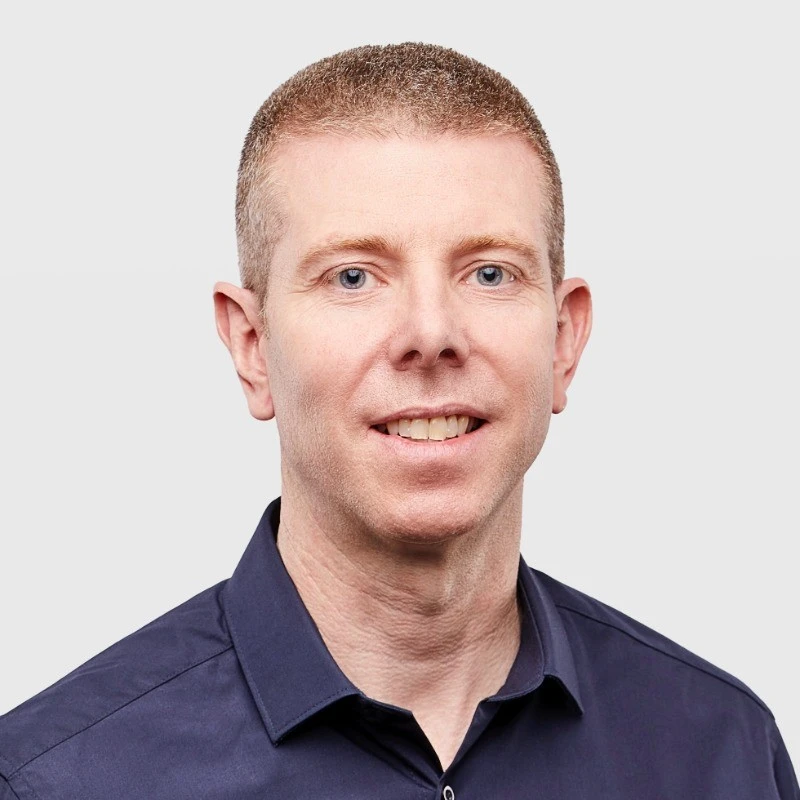Jeremy Courtney, Senior Director, CTO Office, Lawo, USA, in the TKT1957 survey «The year 2030: AI or engineer? Forecast by 50 experts».
- How will the broadcasting industry and broadcast technologies change in the next 5 years?
- If we model the world of broadcasting and broadcast tech in 2030, what role will AI play?
- How will AI change your business segment?
- Which professions will AI displace in the broadcasting technology industry by 2030?
- In the ever-evolving world of media production, the broadcast industry increasingly expects flexible, adaptive production workflows. IP is now widely used and is the enabling factor for agile workflows that can be orchestrated and started at the push of a button.
In modern production setups, new devices and signals are dynamically discovered and securely provisioned, and signal processing, signal formats and production functions can be provided or fine-tuned on demand by the user. This increasingly lives up to the original promise of IP-based infrastructures being more agile overall. Nevertheless, the success of this agile approach inherently depends on operators’ ability to use these systems with confidence and in a speedy fashion.
An IP infrastructure provides greater flexibility primarily through the abstraction of software-based functions from the hardware that hosts the software processes.
The only prerequisite for the hardware is that the compute instance—a bare-metal on-premise platform, a public cloud, or even a vendor-agnostic platform like NVIDIA’s Holoscan for Media—meets the required specifications. If anything, the evolution of standard IT technology is accelerating, which means that we can expect to see a healthy mix of servers in the field: some with increasingly powerful CPUs/GPUs, a range of servers/PCs, and platforms with highly energy-efficient processors, offering higher bandwidth internally and externally via replaceable smart NICs (network interface cards). This will allow operators to accomplish more with less, while the processing capability seamlessly scales with every new hardware iteration. Lawo likes to call this “standing on the shoulders of giants.”
- From a content-creation perspective, generative AI is proving extremely powerful. It is already possible to feed a generative AI engine with some information in order to prepare usable media. Lawo sees many potential applications for this, provided such services are used wisely and in an ethical manner. Fake news is already a huge problem, and as the technology improves, detecting deep fakes will become increasingly difficult.
On the other hand, AI has been used to good effect for the generation of closed captioning. Adding captions to videos (mainly for localization) has always been a time-consuming task. In general, outside of content creation, we believe AI will add value in an assistive role, even though it is probably not a silver bullet to solve all problems.
In the broadcast industry, we have been blessed with some incredibly talented mathematicians who continue to create ever more advanced algorithms. The beauty of algorithms is that they don’t require training and are very deterministic in terms of the results, thus providing broadcast operators with predicable, high-performance and low-latency outcomes to manage their workload more effectively.
- Lawo does not believe that AI will disrupt our business segment, even though it is likely to become a powerful assistant that complements media production based on the use of our equipment. AI is unlikely to replace DSP audio or high-quality video processing for the reasons already discussed.
We have tried and tested algorithms that are predictable and deterministic from both a performance and a latency perspective. Providing operators with predictable, consistent and powerful routines is probably more valuable than promising something that may take time to materialize and cause unexpected results along the way.
AI can add value in other ways, however. On a modern platform, for instance, process monitoring is one of many core requirements. All devices need to log information in a consistent manner into a time-stamped database where logs and metrics are sequenced in the right order. This vastly improves debug times and shortens down times. AI can assist with the analysis of data and ultimately help predict failure conditions. Preventing issues is always better than looking for a cure after the fact.
Other applications could include advanced auto-mixing algorithms, or the intelligent deployment of apps and services to max out hardware and software utilization with a limited number of compute resources.
Finally, from a vendor perspective, specifically in R&D, there are several AI-based tools available to accelerate code development. Whilst this is clearly desirable, it needs to be used in the right way, with a layer of business governance, as it presents a wealth of legal challenges that may prove time-consuming and expensive to navigate.
- We believe there will only be a handful of roles completely displaced by AI in the broadcasting sector. As per the example earlier, it would need to be an activity where the technology lends itself to the application, such as the creation of closed captions, analyzing big data, modelling and simulation. Generally, AI should be considered a tool that assists humans and help make them more efficient.










